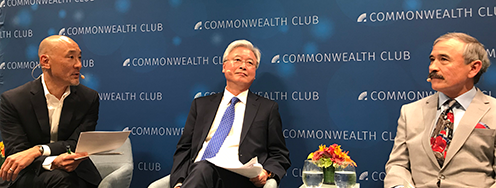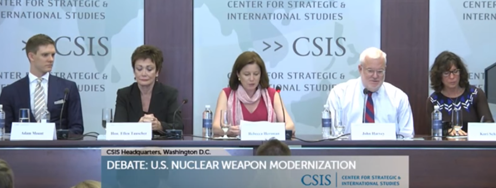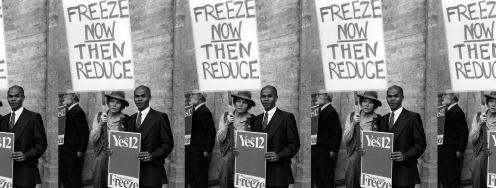Some Nuclear Sunshine
By Joseph Cirincione and Benjamin Loehrke
For the first time since America first tested a nuclear weapon 65 years ago, the government has disclosed how many nuclear weapons are in our active stockpile. It is long overdue.
The good news is that this action enhances U.S. credibility as President Obama presses to reduce all nuclear arsenals and move towards their eventual elimination. “You can’t get anywhere towards disarmament unless you are going to be transparent about how many weapons you have,” Sharon Squassoni, a nuclear analyst with the Center for Strategic and International Studies, told the Associated Press.
The bad news is that we now know for certain that we have 5,113 hydrogen bombs ready to use. One alone can destroy a city. Why so many? And why was this secret in the first place?
Nuclear Secrets
Nuclear programs are profoundly undemocratic. No one voted on making or using the first bomb. Almost all information about the nuclear arsenal is secret, making it difficult for the public to have informed judgments or hold our leaders accountable.
Secrets were the name of the game during the Cold War, as both the United States and the Soviet Union kept the size of their arsenals hidden. Secrecy was justified, in part, by claims that it would keep the other side from being sure that they had enough nukes to take out all of the other country’s weapons first. Meanwhile, both countries competed blindly to finish first in an arms race.
We now know that the United States’ stockpile peaked at over 31,000 nuclear bombs in 1967. The Soviets also raced to build more bombs and, by 1987, we had over 68,000 nuclear weapons between us. Maybe part of the reason these numbers were secret at the time was to spare officials the embarrassment of explaining exactly why it was necessary to have enough weapons to destroy the world hundreds of times over.
Most of the previous disclosures about nuclear stockpiles have been the result of treaties with Russia. Both sides verified the number of missiles they were destroying under the 1987 Intermediate Nuclear Forces Treaty. The START treaties required both countries to count and verify the total number of strategic nuclear weapons, as does the New START treaty now under consideration by the Senate.
This is the first time, however, the government has publicly declared the size of the current active stockpile. Analysts have estimated the size of the U.S. arsenal for years. Turns out, they were pretty accurate.
Robert Norris of the Natural Resources Defense Committee and Hans Kristensen at the Federation of American Scientists had estimated that the active stockpile was 5,100 weapons, just 13 shy of the actual. Kristensen says he and other have “long advocated disclosure and argued that keeping the size of the nuclear arsenal secret serves no real national security purpose in the post-Cold War era.” The U.S. still has more room for openness. Norris and Kristensen estimate there are an additional 4,200 weapons in storage awaiting dismantlement. There are hints that the government will release precise information on this “inactive” stockpile later this year.
A Gain for National Security
So, geek satisfaction aside, what’s to gain from finally revealing our nuclear numbers? A lot, it turns out.
A little openness in our nuclear numbers could go a long way in building confidence that the U.S. is in fact disarming. This in turn increases the willingness of other states to fulfill their obligation to prevent the spread of these weapons.
This is precisely the effort now underway at the United Nations as 189 nations gather to discuss how to strengthen the 40-year-old nuclear Non-Proliferation Treaty (NPT). This pact is the central barrier to the spread of these weapons.
Ten years ago, the members to the NPT specifically agreed on increased transparency in nuclear arsenals and disarmament efforts as part of their thirteen practical steps toward complete nuclear disarmament. A decade later, the U.S. is now finally delivering on that pledge.
Secretary of State Hillary Clinton, speaking before the United Nations at the start of the NPT review conference, said, "For those who doubt that the United States will do its part on disarmament, this is our record, these are our commitments. And they send a clear, unmistakable signal.”
She's right. This is a major step forward and an important part of efforts to restore U.S. credibility and legitimacy so badly damaged over the past ten years.
Joseph Cirincione and Benjamin Loehrke wrote this article for YES! Magazine, a national, nonprofit media organization that fuses powerful ideas with practical actions. Joseph is the president of Ploughshares Fund and author of Bomb Scare: The History and Future of Nuclear Weapons. Benjamin is a research assistant at Ploughshares Fund and a graduate student at the University of Maryland School of Public Policy.
YES! Magazine



